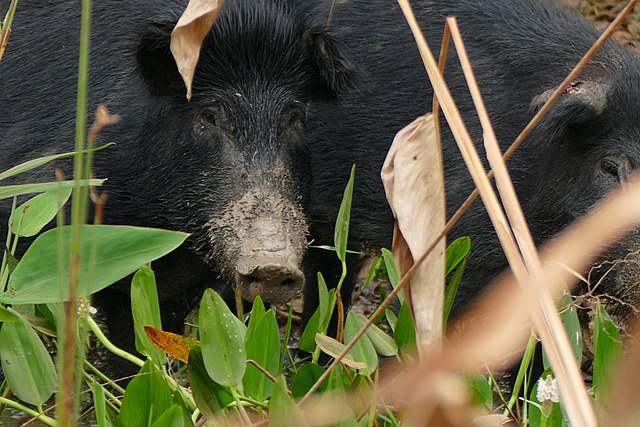Sus scrofa
Description
- In B.C. any pig that is not in captivity or under someone’s control is considered a feral pig. This includes domestic pig breeds, Eurasian wild boars and hybrids.
- They vary in colour and can be grey, black, brown, white or a combination.
- They vary in weight from 35-200kg.
- They may or may not have tusks.

Introduction and Spread
- The Eurasian boar is the wild origin of the European domestic pig. It is native to Eurasia and north Africa.
- Feral pigs have either escaped captivity or been released intentionally for hunting.
- Pigs can reproduce quickly; having over 10 piglets per litter, several times a year.
Consequences of invasion
- Pigs are opportunistic omnivores. They will eat whatever is available including vegetation, fungi, reptiles, amphibians, eggs of ground nesting birds and small mammals.
- They are destructive to agricultural land, native ecosystems and private property.
- They can compete with and prey on livestock and native animals.
- There is a risk of disease transmission to people, livestock and wildlife.
- Wallowing and rooting activities can be very degrading to wetland areas and impact water quality.
Status in the CKISS region
- Within B.C., feral pigs have been reported in low numbers in the Lower Mainland, Vancouver Island, Thompson-Okanagan, Peace, Chilkotin and Kootenay Regions.
- Feral pigs are not yet established in large populations in B.C.
Integrated pest management options
Prevention
- Do not allow pigs to roam in unfenced areas and ensure all fences are well maintained.
- Do not release any pigs – it is illegal in B.C.
Cultural Control
- Feral pigs can be hunted in B.C. and harvests must be reported. However, hunting is not considered an effective method of population control. Reporting of sightings is encouraged.
Additional resources


